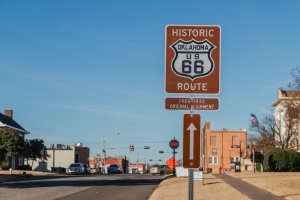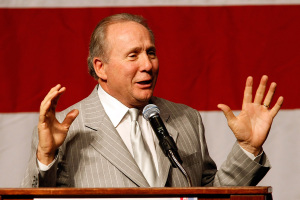SBC Urges Members to Combat U.S. Church Decline
The nation's largest Protestant denomination intends to utilize a church planting day to raise awareness among congregants on the need to plant churches in light of declining numbers in the United States.
The 16 million-member Southern Baptist Convention has designated March 30 as "On Mission Together: Planting New Congregations Sunday" to encourage SBC congregations and members to "recognize their communities as mission fields" and to allow God to use them to start new churches, explained David Meacham, the North American Mission Board's (NAMB) senior strategist for church planting, according to NAMB.
"Some might ask those of us in the Southern Baptist Convention why it needs more churches when it already has more than 42,000 with some 16 million members," Meacham said.
But he cited research by Dave Olson, director of church planting for the Evangelical Covenant Church, which indicates that 3,200 churches close their doors each year in America, while 3,600 new churches are started.
"That resulted in a net gain of 4,600 churches from 1990-2000. However, to have kept pace with population growth during the decade, a net gain of some 39,000 churches was needed," the NAMB church planting strategist said.
Moreover, the overall number of membership of all Protestant denominations in America has declined over the last ten years by 9.5 percent, while the national population has increased by 11 percent.
The United Methodist Church reported last year that its membership was at its lowest since 1930 with just over 8 million members.
Meanwhile, the Lutheran World Federation reported that although its global membership increased in 2006, its western membership declined. Lutheran Christians in North America in general decreased about 1.41 percent, while the LWF churches in North America witnessed a 1.73 percent drop.
The second largest LWF member church, the Evangelical Lutheran Church in America – accounting for 4.85 million members – saw about a 1.6 percent drop in the same year.
Church building-wise, there were 29 churches for every 10,000 Americans in 1900; 17 churches for every 10,000 Americans in 1950; 12 churches for every 10,000 in 2000; and only 11 churches for every 10,000 in 2004, according to NAMB statistics.
"Clearly, we are losing ground with each passing year," said Meacham. "We have a growing evangelistic deficit in America that will best be answered by starting new churches."
Church planting is widely accepted by Christian denominations, especially Southern Baptists, to be the single most effective way to evangelize.
Meacham highlighted that a three-year-old church is only half as effective at reaching people for Christ as in its early days, while a 15 years old church is only one-third as effective. He explained that new churches reach more new people while an older church reaches more established people.
"New churches also speak the language of the next generation," he said. "New churches are often led by younger pastors who know the subtleties of the culture. What they lack in experience, they make up for with a pioneering spirit."
Ed Stetzer, director for research at SBC's LifeWay Christian Resources in Nashville, Tenn., claims more than 50,000 churches were planted in North America between 1980 and 2000, but that church planting today is only half what it was in the 1950s.


























